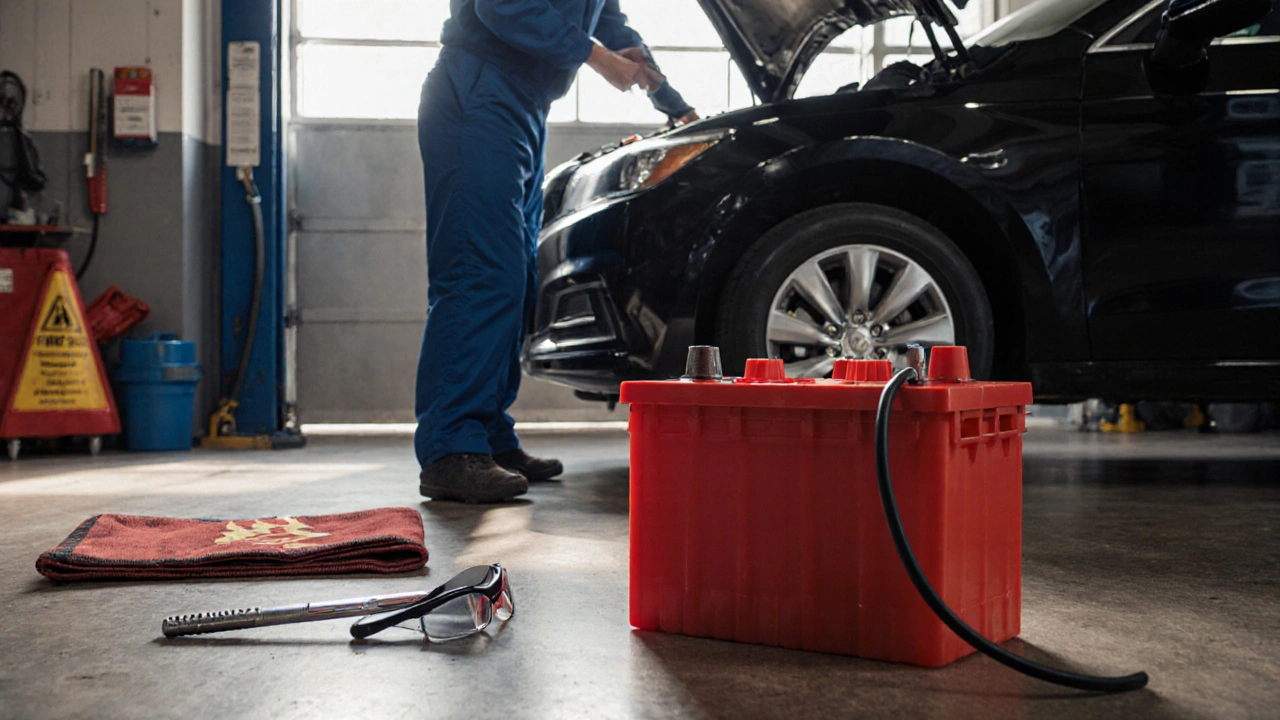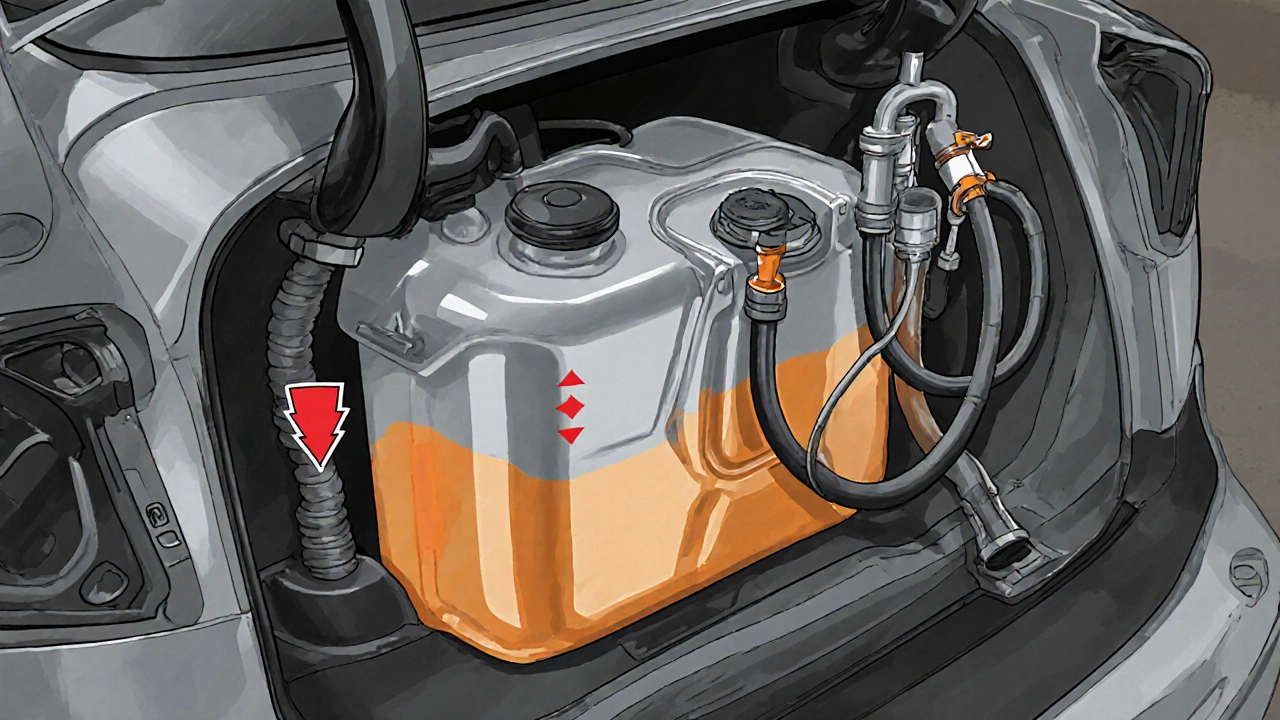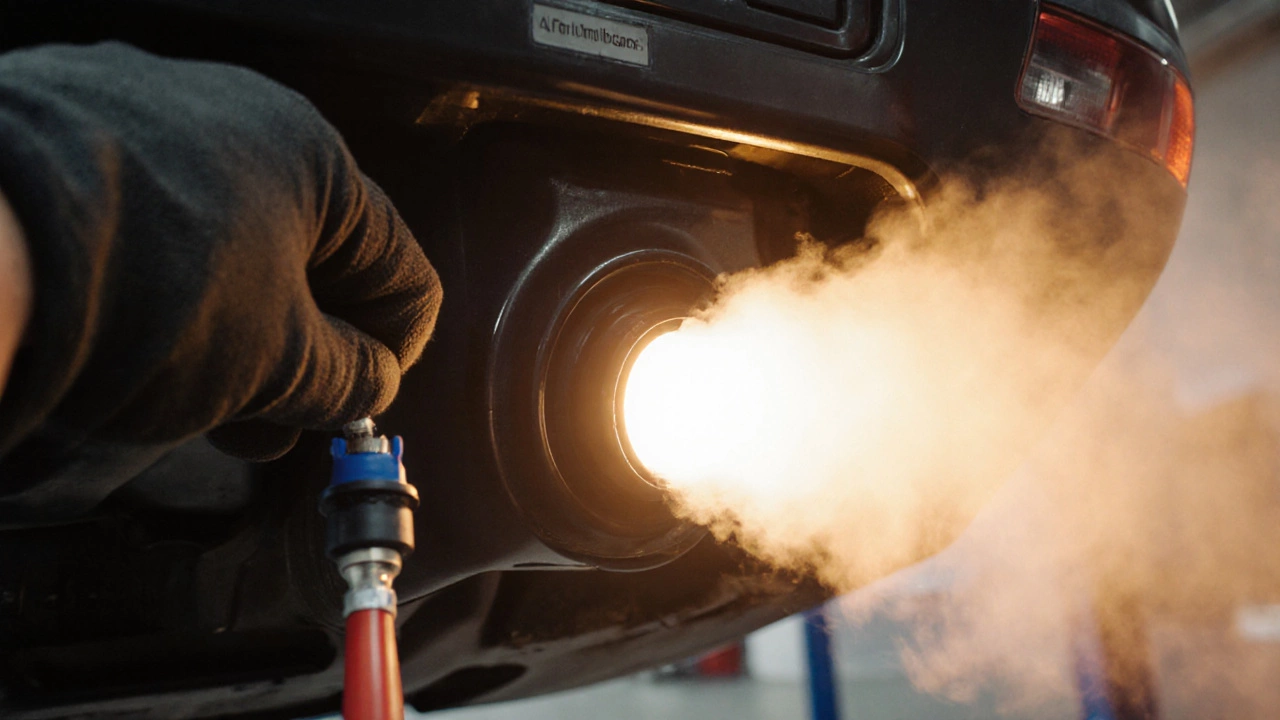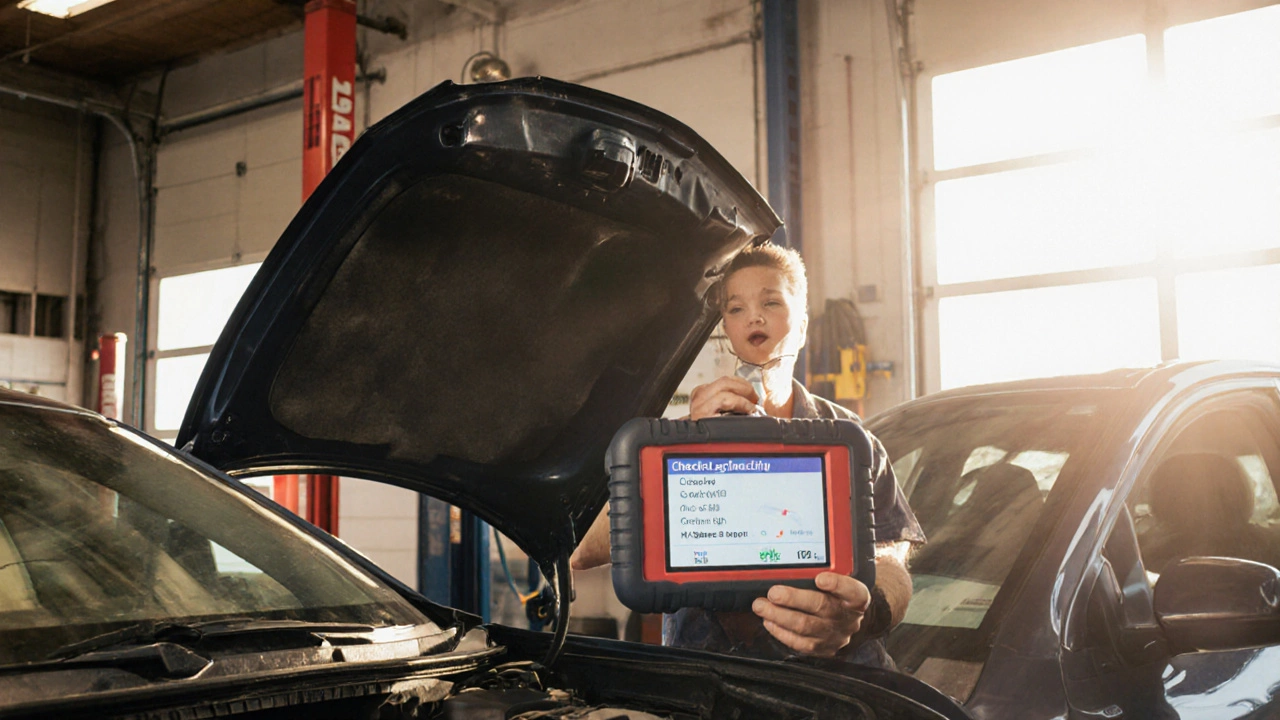 Oct, 24 2025
Oct, 24 2025
Fuel Pump Replacement Safety Advisor
Is it safe to replace your fuel pump without disconnecting the battery?
This tool helps you determine the correct safety procedure based on your vehicle's specifications
Changing a Fuel pump is a common DIY task, but the safety question that pops up every time is whether you should disconnect battery first. This article walks you through the why, when, and how, so you can replace the pump without frying electronics or risking a fire.
Quick Takeaways
- Disconnecting the Car battery eliminates voltage spikes that can damage the ECU, fuel pump relay, and sensors.
- Modern cars with high‑voltage systems (e.g., hybrid or start‑stop engines) almost always require a full disconnect.
- If you skip the step, you risk blown fuses, fried modules, and even a fuel leak ignition.
- Follow a systematic procedure: power off, wait for residual charge, disconnect, then replace the pump.
- Re‑connect and verify with a brief cranking test before final assembly.
Why Battery Disconnection Matters
When you pull the fuel pump out, you also disturb the wiring harness that feeds it. The pump’s reductor and control module sit just inches from the fuel rail, and a sudden surge can travel through the Ignition switch or the ECU. A few millivolts of stray voltage might not seem like much, but modern electronics are sensitive enough to short‑circuit at that level.
Two real‑world incidents illustrate the risk:
- A homeowner replaced a pump on a 2014 Camry without disconnecting the battery. The next day, the engine control unit threw a P0606 code (internal control module memory error) and the repair bill topped $800.
- A 2020 hybrid SUV suffered a short in the fuel pump relay after a rushed pump swap. The spike ignited fuel vapors in the rail, causing a minor fire that damaged the connector housing.
Both cases boiled down to one preventable mistake: leaving the Battery terminal live.
When Is Disconnection Absolutely Required?
Not every vehicle is built the same. Here’s a quick decision matrix:
- Older, non‑computer‑controlled cars (pre‑1995): You can often get away with just disconnecting the Fuel pump relay or pulling the relevant fuse. Still, a full battery disconnect adds a safety net for the occasional stray spark.
- Cars with electronic fuel injection (EFI) after 1995: The ECU constantly monitors pump speed and fuel pressure. Any voltage fluctuation can corrupt sensor data. Disconnect the battery.
- Start‑stop or hybrid models: These use high‑voltage accessories and a dedicated Reluctor to manage engine shutdown. Full battery isolation is mandatory.
- Vehicles with a Safety valve on the fuel rail: The valve can close quickly if a spark is detected, but the shutdown process can be delayed, increasing fire risk. Disconnect.

Step‑by‑Step: Safely Disconnecting and Replacing the Fuel Pump
- Gather tools and documentation
- Service manual for your make/model (crucial for torque specs and pump location).
- Socket set, screwdrivers, fuel line disconnect tools.
- Safety glasses, gloves, and a fire‑proof blanket.
- Relieve fuel system pressure
Remove the fuel pump relay or the Fuses that protect the pump. Then crank the engine for about five seconds to let residual pressure escape. Expect a hissing sound from the Fuel line.
- Turn off the ignition and wait
After the engine is off, wait at least 30 seconds. Capacitors in the ECU can hold charge for a few seconds longer, and the Voltage on the wiring harness will drop to near‑zero.
- Disconnect the Car battery
Open the hood, locate the battery, and first loosen the negative (-) terminal clamp. Push the clamp aside, then repeat for the positive (+) terminal if you prefer a total lock‑out. Some technicians also remove the Ground strap that ties the engine block to the chassis for extra safety.
- Access the fuel pump assembly
Most pumps sit inside the fuel tank, accessed via a rear‑firewall plug or a tank‑top vent cover. Remove any retaining bolts, shields, or pressure straps according to the service manual.
- Unplug the electrical connector
Press the locking tab on the connector that feeds the pump. Pull it straight out to avoid bending pins. This is where a stray spark would most likely occur if the battery were still live.
- Detach the fuel lines
Use a quick‑release tool to pop the fuel line fittings. Have a catch pan ready; the last few ounces of fuel can splash.
- Remove the old pump and install the new one
Swap the pump, making sure the o‑rings are lubricated with clean gasoline‑compatible grease. Re‑attach the lines, electrical connector, and any retaining bolts.
- Reconnect the battery
Re‑attach the positive (+) terminal first, then the negative (-). Tighten to the torque spec in the manual (usually around 10 Nm for small terminal clamps).
- Prime the system and test
Turn the ignition to the “ON” position a few times without starting the engine. This allows the pump to build pressure and clears air from the lines. Then start the engine and listen for a steady humming noise from the tank area. Check for leaks around the new connections.
What Happens If You Skip the Battery Disconnect?
Skipping the step might seem to save a few minutes, but the hidden costs can pile up fast:
- Electrical damage: The sudden load change can blow the Fuel pump relay or damage the ECU’s power‑supply circuits.
- Fuel system ignition: A spark near the fuel rail can ignite vapor, leading to fire or explosion. Even a small flame can ruin the tank, pump, and nearby components.
- Diagnostic headaches: Modern cars log error codes instantly. You may end up with multiple DTCs (Diagnostic Trouble Codes) that require a scan tool to clear, adding time and money.
- Warranty issues: Many manufacturers void the power‑train warranty if you perform a repair without following the prescribed safety procedure.

Comparison: Disconnect vs. Keep Battery Connected
| Aspect | Disconnect Battery | Leave Battery Connected |
|---|---|---|
| Safety (spark risk) | Eliminates spark source; virtually zero fire risk. | Higher chance of unintended spark; fire hazard. |
| Electronic damage | Protects ECU, relay, sensors, and infotainment. | Potential blown fuses, fried modules, costly diagnostics. |
| Time required | Adds ~5‑10 minutes for terminal removal. | Saves a few minutes but risky. |
| Warranty compliance | Meets most OEM service guidelines. | May void power‑train warranty. |
| Tools needed | Standard socket set; no extra equipment. | Same tools; no extra steps. |
Common Pitfalls and Pro Tips
- Pitfall: Forgetting to remove the Safety valve lock pin. Tip: Mark the pin with a bright sticker before removal.
- Pitfall: Not checking the Fuel pump relay for corrosion. Tip: Lightly spray contact cleaner and reseat the relay.
- Pitfall: Re‑using old o‑rings. Tip: Always replace o‑rings with OEM‑specified ones to avoid leaks.
- Pitfall: Starting the engine before all clamps are tight. Tip: Do a quick visual inspection of every hose and connector before the first crank.
- Pitfall: Ignoring the service manual’s torque specs. Tip: Use a torque wrench; over‑tightening can crack the tank.

Frequently Asked Questions
Do I need to disconnect the battery on a 2008 Corolla?
Yes. The 2008 Corolla uses an electronic fuel‑injection system that relies on the ECU. Disconnecting the negative terminal prevents voltage spikes that could damage the ECU or the fuel pump relay.
Can I just pull the fuse instead of disconnecting the battery?
Pulling the fuse reduces risk but does not guarantee safety. Some circuits remain energized through other paths, especially in cars with starter‑stop features. Full battery disconnect is the safest bet.
How long should I wait after disconnecting the battery?
Wait at least 30 seconds to let capacitors discharge. For hybrid or electric‑assist models, wait up to 2 minutes and follow the manufacturer’s high‑voltage lockout procedure.
What tools do I need to remove the fuel pump?
A basic socket set, a fuel line disconnect tool, a torque wrench, safety goggles, and the vehicle’s service manual. Some models require a special pump‑extraction bracket, which is listed in the manual.
Will a fuel pump replacement trigger the check‑engine light?
If the pump sensor or pressure sensor is disturbed, the ECU may log a P0093 (fuel pressure sensor) code. After reinstalling, clear the codes with an OBD‑II scanner or let the car’s self‑learn cycle reset them.
Next Steps After a Successful Swap
Once the engine runs smooth and you’ve double‑checked for leaks, take a short test drive. Listen for any abnormal noises from the tank area and watch the fuel gauge for steady behavior. If everything checks out, write down the mileage of the replacement and keep the old pump for reference - you never know when a warranty claim might need the part number.
Remember, the extra few minutes you spend disconnecting the battery are a tiny price for protecting expensive electronics and preventing a fire. Happy wrenching!